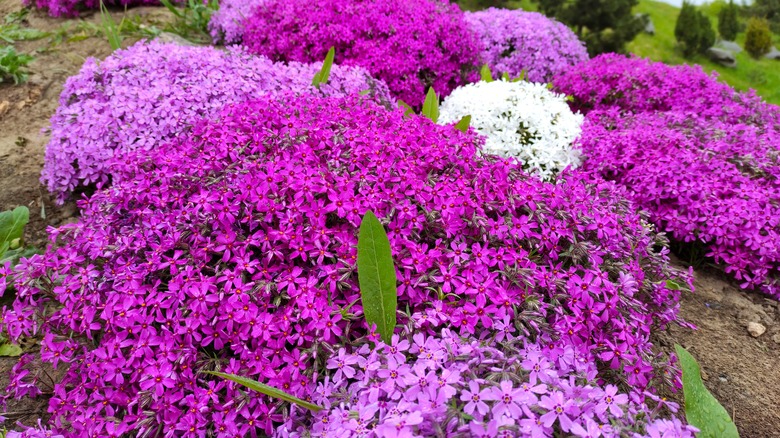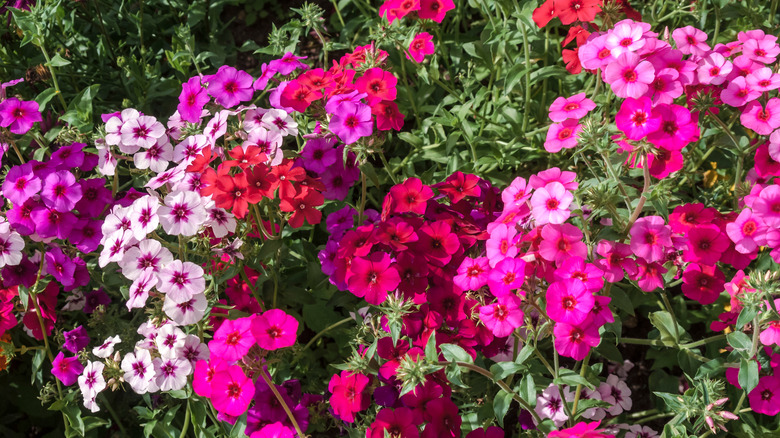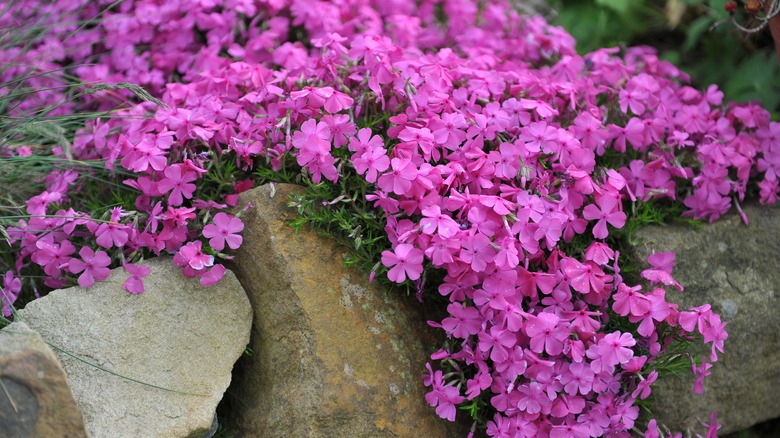Why You May Want To Reconsider Growing Creeping Phlox From Seed
Creeping phlox is a gorgeous perennial ground cover that can transform your garden into a whimsical paradise. While it can, in theory, be grown from seed, creeping phlox is slow to mature, and the seeds are not carried by any major seed companies, making them impractical to purchase. Luckily, creeping phlox plants can be easily purchased at garden centers or propagated from cuttings, so you don't have to worry about trying to grow them from seed. For gardeners who prefer to start all their plants from seeds, annual bedding phlox (Phlox drummondii) is a far more practical option.
It is unsurprising that creeping phlox (Phlox stolonifera or Phlox subulata), is slow to mature, as that is a trait it shares with many perennials. Gardeners are generally told to expect their perennials to take three years to mature even when they are purchased as young plants instead of grown from seed. House Digest's Master Gardener Tiffany Selvey notes that "while it's technically possible to start creeping phlox from seed, it is next to impossible to actually purchase those seeds. Even if you manage to find them, it could take years to get blooms from this woody ground cover. " She advises that "a better choice for those who want to start a variety of phlox from seed, would be one of the annual options (Phlox drummondii), which grows from 6 to 20 inches tall, depending on the variety."
Phlox you can grow from seed
Annual phlox is widely available from many seed companies and comes in an array of colors, from pastels to bold primary shades. Unlike creeping phlox, which can take years to mature, annual phlox grows quickly and can easily be sowed directly into your garden in early spring to provide you with flowers all summer. It also self-seeds, so while it is an annual, you may only need to plant it once to enjoy it for years to come.
Annual phlox grows best in full sun to part shade and appreciates acidic or neutral soil pH. While it is native to Texas, it grows well during summer months in zones 2 through 11. As with most other phlox varieties, annual phlox is a hit with butterflies and hummingbirds and is impressively drought tolerant once established. As wonderful as annual phlox is, though, it is not the same as perennial creeping phlox.
Growing and caring for creeping phlox
Creeping phlox is an ideal ground cover plant to grow instead of grass. While growing creeping phlox from seed is not a practical option, young plants are widely available in garden centers in a multitude of colors including pinks, purples, and whites, and can also be propagated from cuttings from existing plants in your garden or a friend's garden. As with many spring-blooming perennials, the best time to divide creeping phlox is in autumn, though it can also be divided in early spring.
If you're acquiring a new creeping phlox plant, be sure to check whether you're purchasing Phlox stolonifera or Phlox subulata, as both are referred to as creeping phlox and look quite similar. While they have a lot in common, the two plants do not have identical growing needs, with subulata hardy in zones 3 through 9, while stolonifera is only hardy in zones 5 through 8. Both species of creeping phlox thrive in full sun and acidic soil, though stolonifera can also handle part shade and a neutral pH. They also both benefit from well-draining soil and are relatively drought-tolerant once they are established.


